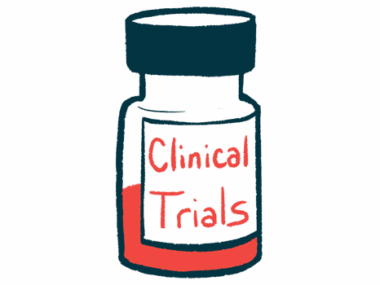FDA approves new Kisunla dosing regimen to lower ARIA-E risk
Phase 3 trial found regimen led to greatest reductions in ARIA-E
Written by |

The U.S. Food and Drug Administration (FDA) has approved a more gradual titration dosing schedule for Kisunla (donanemab) for people with early symptomatic Alzheimer’s disease based on evidence that it can lower the risk of ARIA-E, a potentially serious side effect characterized by brain swelling.
While the total amount of the medication received over the course of the first three doses won’t change, the balance will be shifted so that less is given on the first dose, and more on the third.
“We are confident that this label update for Kisunla will significantly aid healthcare professionals in evaluating appropriate treatment options for their patients,” Brandy Matthews, MD, vice president of global and U.S. medical affairs for Alzheimer’s disease at Eli Lilly, Kisunla’s developer, said in a company press release. “This update underscores our unwavering commitment to patient safety and the advancement of Alzheimer’s disease treatment by potentially mitigating the risk of ARIA-E.”
In Alzheimer’s, the amyloid-beta and tau proteins form toxic clumps, or plaques, in nerve cells that are thought to contribute to neurodegeneration.
Kisunla designed to bind to amyloid-beta plaques, mark them for clearance
Kisunla is an antibody that’s designed to bind to amyloid-beta plaques and mark them for clearance by the immune system, which is expected to slow neurodegeneration and ease disease symptoms.
The therapy was approved by the FDA last year for adults with early symptomatic Alzheimer’s, including people with mild cognitive impairment or mild dementia, who have confirmed evidence of amyloid-beta plaques.
The medication is given via monthly infusions into the bloodstream. With its initial approval, a lower titration dose of 700 mg (two vials) was given for the first three infusions, then doubled to 1,400 mg (four vials) for all subsequent infusions.
That regimen was supported by data from the pivotal Phase 3 TRAILBLAZER-ALZ 2 study (NCT04437511), where Kisunla was found to slow cognitive and functional declines among people with early Alzheimer’s.
Kisunla comes with a boxed warning about the risk of amyloid-related imaging abnormalities, or ARIA, a group of side effects that are common with amyloid-beta-targeted treatments and can include ARIA-E (brain swelling) or ARIA-H (brain bleeding).
These complications are usually asymptomatic, but can sometimes be serious or life-threatening. The newly recommended regimen is expected to reduce the risk of them.
Instead of three initial doses at 700 mg, a single vial of the medication is shifted from the first dose to the third dose, making the first dose 350 mg (one vial), the second dose 700 mg (two vials), and the third dose 1,050 mg (three vials).
While the total amount of Kisunla delivered over the three titration doses remains the same, it allows for a more gradual titration up to the maintenance dose, which also does not change in the new regimen.
TRAILBLAZER-ALZ 6: Modified titration significantly lowered rate of ARIA-E
The evidence that this will reduce ARIA-E comes from the Phase 3b TRAILBLAZER-ALZ 6 trial (NCT05738486), where the modified titration schedule significantly lowered the rate of ARIA-E compared with the original dosing schedule while remaining similarly efficacious for adults with early Alzheimer’s.
Specifically, the modified regimen lowered the incidence of ARIA-E by 41% after six months, and by 35% after a year compared with the original regimen. The severity of ARIA-E events was also significantly reduced with the modified regimen.
The greatest difference in ARIA-E rates was observed in people with two copies of the ApoE4 gene variant, a strong genetic risk factor for Alzheimer’s that’s also associated with a higher risk of ARIA events.
Importantly, the new dosing schedule performed as well as the original regimen for removing amyloid plaques and lowering levels of toxic forms of tau.
Other dosing regimens were also tested, but the recently approved one led to the greatest reductions in ARIA-E. No new safety issues were identified, although higher rates of hypersensitivity and infusion-related reactions were observed in this study than in previous ones, according to Lilly.
“This updated dosing strategy is a meaningful advancement for patients and their care teams,” said Elly Lee, MD, chief medical officer and principal investigator at Irvine Clinical Research. “By significantly reducing the risk of ARIA-E, we can offer patients and care teams greater confidence in the safety of Kisunla while preserving its ability to reduce amyloid.”
Kisunla still has a boxed warning for ARIA. Even with the new dosing regimen, individuals using the medication should be monitored for these complications.







